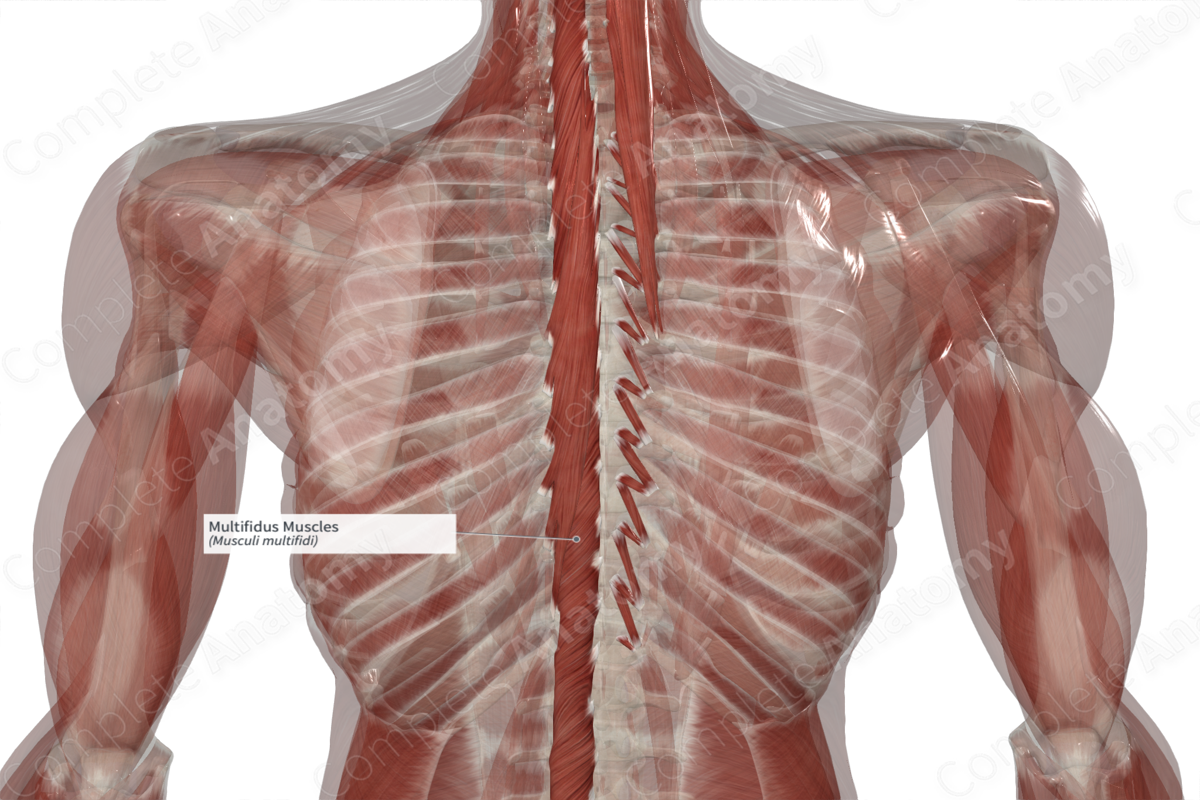
Quick Facts
Origin: Posterior superior iliac spine, dorsal surface of sacrum, mammillary processes of lumbar vertebrae, transverse processes of thoracic vertebrae, articular processes of C4-C7 vertebrae.
Insertion: Spinous processes of lumbar, thoracic, and cervical vertebrae.
Action: Extends neck and trunk; stabilizes vertebral column.
Innervation: Medial branches of posterior rami of cervical, thoracic, and lumbar nerves.
Arterial Supply: Occipital, deep cervical, and vertebral arteries, dorsal branches of posterior intercostal and lumbar arteries, and lateral sacral arteries.
Related parts of the anatomy
Origin
The multifidus muscles originate from the:
- posterior superior iliac spine;
- dorsal surface of sacrum;
- mammillary processes of lumbar vertebrae;
- transverse processes of thoracic vertebrae;
- articular processes of fourth to seventh cervical vertebrae.
Insertion
The fibers of the multifidus muscles travel superomedially, extending across two to five vertebral segments, and insert onto the:
- spinous processes of lumbar vertebrae;
- spinous processes of thoracic vertebrae;
- spinous processes of axis (second cervical vertebrae) to seventh cervical vertebrae.
Key Features & Anatomical Relations
The multifidus muscles are the most central of the three muscles of the transversospinal muscles. It is an intrinsic muscle of the back and is found along the entire length of the back and posterior neck regions. It is a long, thick skeletal muscle that is composed of three parts:
- multifidus colli (multifidus cervicis), which is the superior portion;
- multifidus thoracis, which is the middle portion;
- multifidus lumborum, which is the inferior portion.
Overall, the multifidus muscles are located:
- superficial to the rotatores muscles;
- deep to the semispinalis and erector spinae muscles;
- medial to the levatores costarum breves and longi muscles;
- lateral to the interspinales muscles.
Actions
The multifidus muscles are involved in multiple actions:
- during bilateral contraction, it extends the neck and trunk (Standring, 2016);
- helps stabilize the vertebrae column (Moore, Dalley and Agur, 2009).
Weakness of this muscle leads to lower back instability and pain.
List of Clinical Correlates
- Lower back pain
References
Moore, K. L., Dalley, A. F. and Agur, A. M. R. (2009) Clinically Oriented Anatomy. Lippincott Williams & Wilkins.
Standring, S. (2016) Gray's Anatomy: The Anatomical Basis of Clinical Practice. Gray's Anatomy Series 41st edn.: Elsevier Limited.
Learn more about this topic from other Elsevier products





